1502 - Flexible Work Arrangements
Category
Work Schedules
Audience List
- Administrative Chiefs
- Department Directors
- Employee Relations Officers
- Personnel Officers
- Personnel Transactions Supervisors
Synopsis
This policy
- Describes various flexible work arrangements and how flexibility in the work schedule can assist employees in balancing work and personal commitments while meeting business needs.
Introduction
The purpose of this policy is to encourage departments to consider and support flexible work arrangements for employees when they meet the needs of both the department and the employee.
Statement
State departments are encouraged to support flexible work arrangements for its employees when they meet the needs of both the department and the employee. Consistent with most Memoranda of Understanding (MOU) and the goal of Civil Service Improvement, flexible work arrangements offer creative approaches for completing work while promoting balance between work and personal commitments.
Flexible work arrangements offer alternative approaches to getting work done through non-traditional work hours, workweeks, and/or locations. These alternatives can assist employees in balancing work and personal commitments while meeting business needs and objectives. Additionally, state managers and supervisors can use flexible work arrangements as a tool to promote productivity, improve employee engagement, enhance job satisfaction, and reduce absenteeism. These same alternatives can also enhance recruitment and retention.
The following are brief descriptions of various flexible work arrangements:
| Type of Schedule | Description |
|---|---|
Alternate Work Week Schedule | A work schedule which allows employees to work a fixed schedule other than 5 days per week, 8 hours per day. |
Reduced Work Time Schedule | A fixed work schedule that is less than 40 hours per week. Pay and leave credits are proportionate to the employee’s time base. |
Job Sharing | Allows two employees to share the responsibilities of one full-time position while each employee is accountable for the success of the total job. Each employee receives a prorated salary and leave accruals. |
Flextime | An arrangement that permits employees to adjust their start and end time. Flex schedules must meet the employer’s core hour requirements. |
Telework | An arrangement that allows employees to regularly work at a location other than their normal work location for a pre-established number of days. Employees must be available and accessible by phone and email during the agreed upon work schedule. |
Eligibility
The minimum requirement for determining approval of a flexible work arrangement is whether it meets the department’s business needs. If any provision in this PML is in conflict with a provision of an applicable MOU, the MOU shall control. Eligibility may vary for each option as some alternatives may not be appropriate for specific job functions or for certain employees, depending on departmental needs. All requests should be treated equitably, regardless of the employee’s reason for requesting flexibility. The following are suggested guidelines when considering a flexible work option:
- Employees are expected to meet the same performance standards as they did previously, and managers/supervisors will be expected to use the same measurement criteria previously in place.
- Employees are expected to demonstrate the competencies necessary to succeed in the proposed flexible work arrangement. In addition, a manager/supervisor may consider a request if the arrangement will help improve performance.
- New employees may be hired into a flexible work arrangement if the arrangement meets the business needs at the time of hire, with the understanding that such an arrangement may be changed as business needs dictate.
- Employees who request to telecommute must ensure they have an available safe and suitable workspace that is appropriately confidential and free of distractions and interruptions that may interfere with work. Where applicable, telecommuters will need to find ways to maintain a distinct separation between work activities and personal activities.
- All arrangements are subject to ongoing review and may be terminated or changed in accordance with departmental policy and/or the applicable MOU.
- Flexible work arrangements may be terminated if there are performance issues or concerns.
- No flexible work arrangement may result in additional overtime liability.
The following are a few examples of legitimate business and operational needs that may exclude employees from participating in a flexible work arrangement:
- A customer service unit requiring frequent or regular face to face communication/interaction.
- A position involving frequent program consultation with management, peers, the legislature, or other clients.
- A position providing frequent managerial/supervisory direction regarding work activities.
- Assignments requiring immediate emergency responses, such as law enforcement or fire suppression.
- Assignments involving regular requests for assistance, such as a medical response.
Prior to approving or denying a flexible work arrangement, departments must review the applicable MOU to ensure a flexible work arrangement is in compliance. In addition, departments must ensure its flexible work arrangement policy complies with state policy and applicable laws, rules and regulations.
Application
Not Applicable.Authorities
- Bargaining Contracts - MOUs
- Government Code section 19851
- Government Code section 19852
- Government Code sections 19996.19 to 19996.29
Resources
Web Pages
- CalHR Alternate Work Week Policy: CalHR Alternate Work Week Policy
- DGS Statewide Telework (Telecommuting) Policy: DGS Statewide Telework (Telecommuting) Policy
Authorized By
Melissa Russell
Chief
Personnel Management Division
Contact Person
Personnel Services Branch
Personnel Program Consultant
, Personnel Services Branch
Phone: 916-909-3702
Fax: 916-327-1886
Email: psb@calhr.ca.gov
Superseded Policies
Not Applicable.History
Please note that some PDF Forms may not be opened directly in your browser. These PDF forms may be downloaded and saved to your computer to be opened with Adobe Reader.
